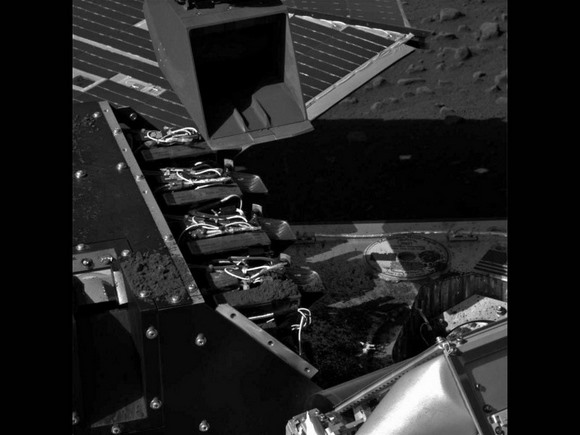The Phoenix Mars Lander used its robotic arm to deliver a second sample of soil for analysis by the spacecraft's wet chemistry laboratory. Data received from Phoenix on Sunday night confirmed the soil was in the lab's cell number 1. This image taken by the the lander's Surface Stereo Imager shows the Robotic Arm scoop positioned over the Wet Chemistry Lab Cell 1 delivery funnel on Sol 41, or July 6. Test results will be compared in coming days to the results from the first Martian soil analyzed by the wet chemistry laboratory two weeks ago. That laboratory is part of Phoenix's Microscopy, Electrochemistry and Conductivity Analyzer.
On Monday, Phoenix also tested a method for scraping up a sample of icy material and getting it into the scoop at the end of the robotic arm. Photography before, during and after the process will allow evaluation of this method. If the test goes well, the science team plans to use this method for gathering the next sample to be delivered to Phoenix's bake-and-sniff instrument, the Thermal and Evolved-Gas Analyzer (TEGA). The science team wants to be as precise and quick as possible in delivering the next sample to TEGA, as it
possibly could be the last time the ovens can be used
because of a short circuit that may occur the next time the oven is activated.
News Source:
U of Arizona
 Universe Today
Universe Today
